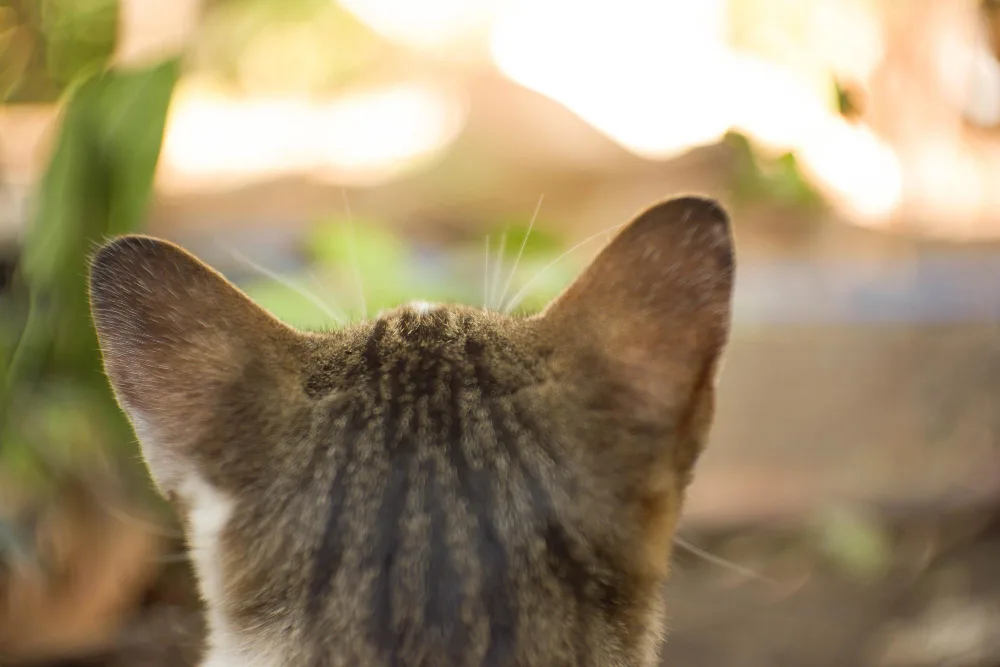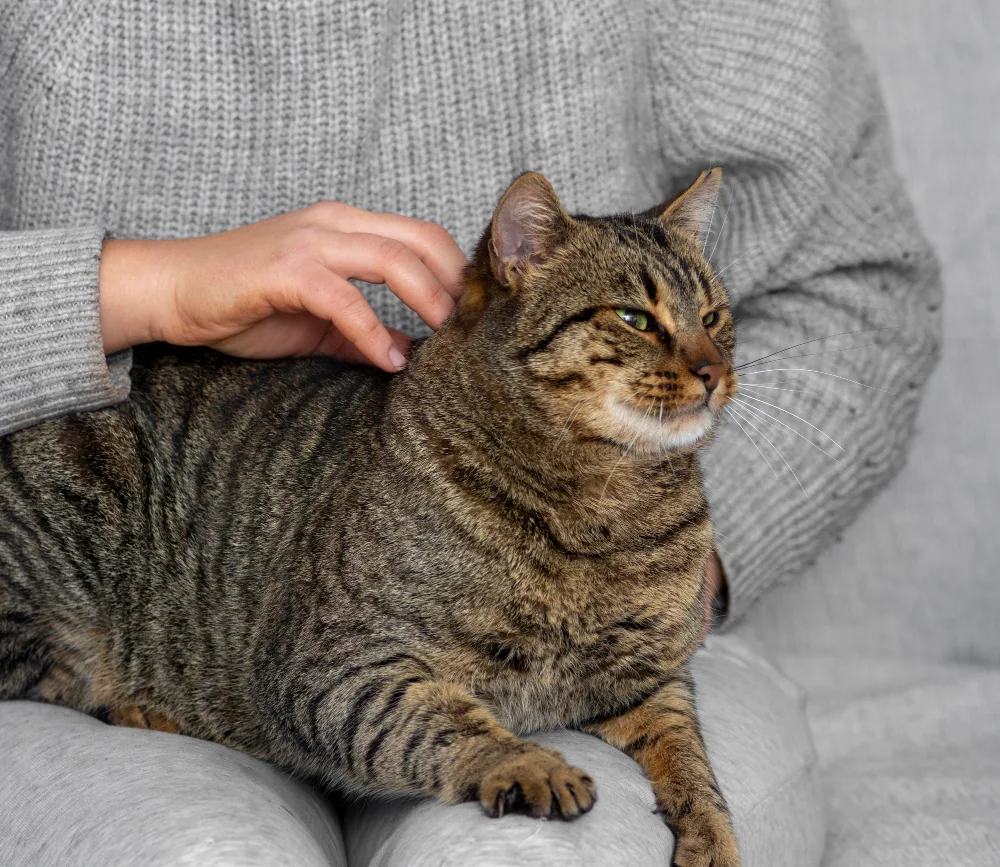Cats are enigmatic creatures, capable of communicating a wealth of emotions without a single meow. In fact, Studies have shown that posture accounts for 50% of a cat’s communication with humans, highlighting the importance of understanding their body language. Additionally, 85% of cats use ear position as a reliable indicator of their emotional state. Understanding cat body language isn’t just fascinating; it’s essential for keeping your pet happy, safe, and stress-free. From the twitch of a tail to the dilation of pupils, each gesture carries meaning.
Whether you’re a first-time cat owner or a seasoned feline fan, decoding cat body language helps you read moods, anticipate behaviour, and strengthen your bond. Let’s break down the key signals: tail, ears, and pupils, and what they reveal about your cat’s inner world.
Understanding cat tail signals
The tail is arguably a cat’s most expressive body part. Its position, movement, and even fur can reveal emotions and intentions.
Common tail positions and meanings:
- Upright with a slight curve at the tip: Confidence, friendliness, or greeting.
- Puffed up and bristled: Fear or aggression, your cat is on high alert.
- Low and tucked between legs: Anxiety, submission, or pain.
- Thrashing side to side: Agitation or hunting focus; approach with caution.
- Slow swish: Concentration or mild irritation; not necessarily aggressive.
Pro tip: A tail held high with a relaxed tip usually signals a happy, confident cat. Conversely, rapid swishing paired with tense posture often precedes a defensive action.
Ears: Tiny triangles with big messages

Cats’ ears are more than just hearing devices; they are emotional indicators. Their position can signal mood instantly.
Ear positions decoded:
- Forward-facing: Curious, relaxed, or playful.
- Sideways (‘airplane ears’): Uncertain, cautious, or slightly annoyed.
- Flat back against head: Fear, anger, or defensive aggression.
- Twitching: Irritation or hyper-alertness to sounds.
Remember, ear cues often work alongside tail and body posture. A cat with flat ears and an upright, puffed tail is signalling fear mixed with readiness to defend.
What pupils reveal about your cat
Pupils are tiny yet powerful windows into a cat’s emotional state. Changes can happen in seconds and often indicate mood swings or reactions to stimuli.
Pupil meanings:
- Dilated (large) pupils: Excitement, fear, or low light. Always check context; your cat may be thrilled or scared.
- Constricted (narrow) pupils: Contentment, aggression, or hunting focus.
- Uneven pupils: Medical issue; seek veterinary advice immediately.
Quick tip: Combine pupil observations with tail and ear positions to get a fuller picture of your cat’s feelings.
Other key body language cues
Cats use more than just tails, ears, and pupils to communicate. Watch for these subtle signals:
- Whiskers: Forward whiskers indicate interest; pulled-back whiskers show fear.
- Body posture: Arched back with fur standing signals threat, while a relaxed, stretched-out body signals comfort.
- Vocalisation: Meows, purrs, and hisses are often context-driven; pair with body language for accuracy.
Step-by-step: Reading your cat like a pro
- Observe the tail first. Its position gives an immediate mood snapshot.
- Check the ears. Look for signs of curiosity, agitation, or fear.
- Examine the pupils. Quick changes can reveal emotional spikes.
- Integrate the rest of the body. Posture, whiskers, and movements complete the picture.
- Consider context. Time of day, location, and recent interactions influence behaviour.
By following these steps, you can start interpreting your cat’s signals with accuracy. The more you practise, the faster you’ll decode cat body language.
Common misinterpretations

Even experienced cat owners sometimes get it wrong. Avoid these common pitfalls:
- Thinking a swishing tail always means aggression. It can indicate concentration or excitement.
- Assuming relaxed ears equal happiness. A cautious cat may flatten its ears slowly to hide.
- Ignoring subtle pupil changes. Even slight dilation can indicate stress or over-stimulation.
Awareness of these nuances ensures better communication and reduces misunderstandings with your feline friend.
Why understanding cat body language matters
Decoding cat body language isn’t just about curiosity; it has real-world benefits:
- Safety: Reduce bites and scratches by recognising warning signs early.
- Bonding: Respond appropriately to moods, strengthening trust.
- Wellbeing: Identify stress, pain, or illness before it becomes serious.
Remember, every cat is unique. While patterns are consistent, individual personalities can shift signals slightly.
Now you can finally read your cat like a pro
Cats are silent yet expressive creatures. By paying attention to tail, ears, pupils, and overall posture, you unlock a deeper understanding of their needs and emotions. Learning to read cat body language can transform your relationship from guesswork to clear communication. The next time your cat greets you with a twitching tail or dilated pupils, you’ll know exactly what they’re trying to say.
Mastering these cues ensures a happier, healthier, and safer life for both you and your feline companion.
